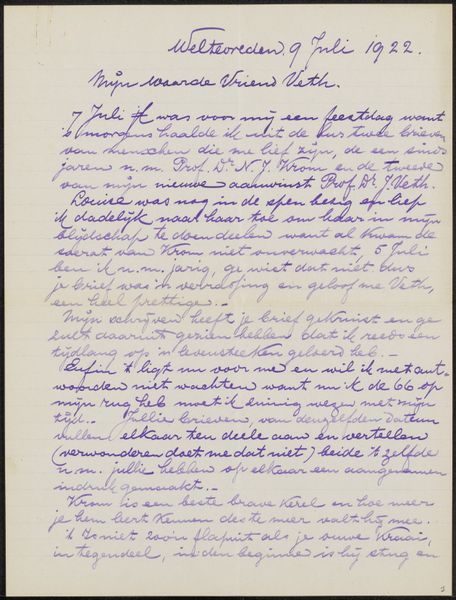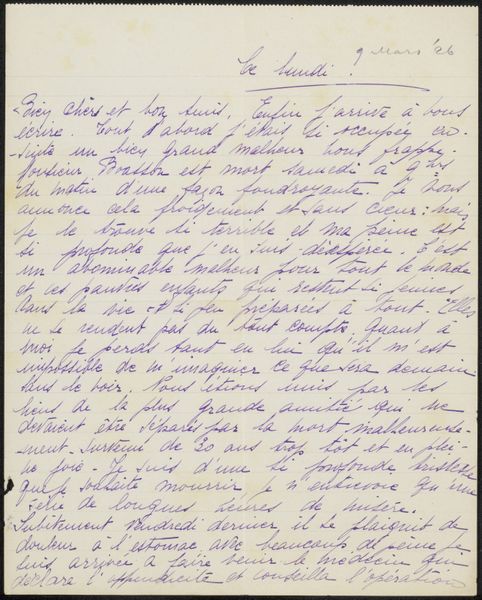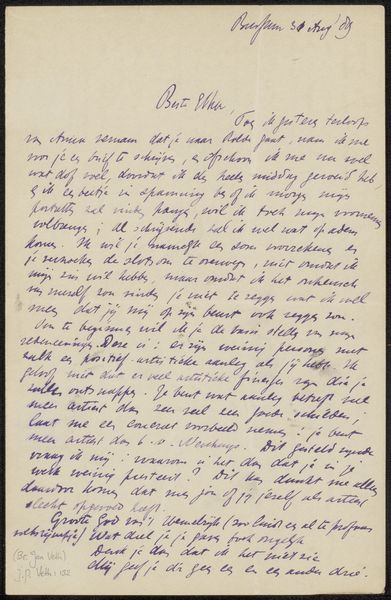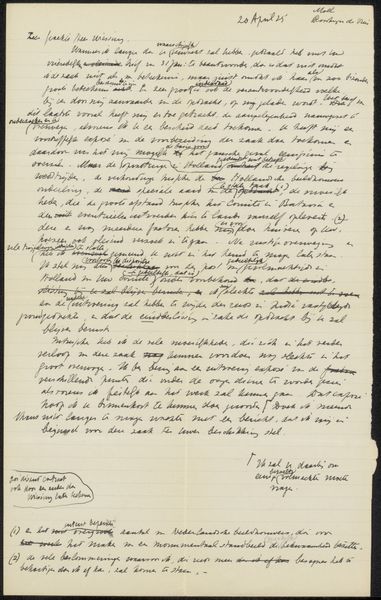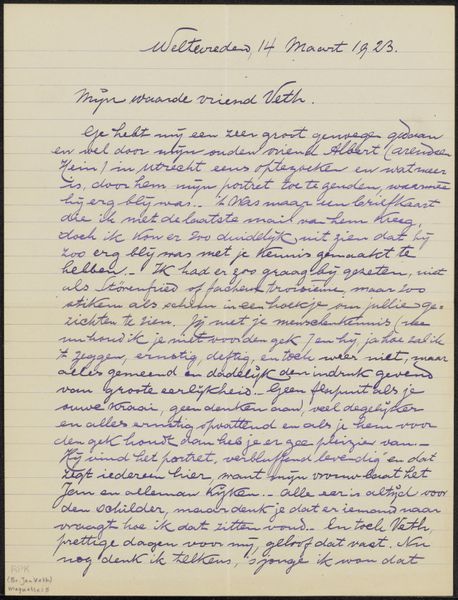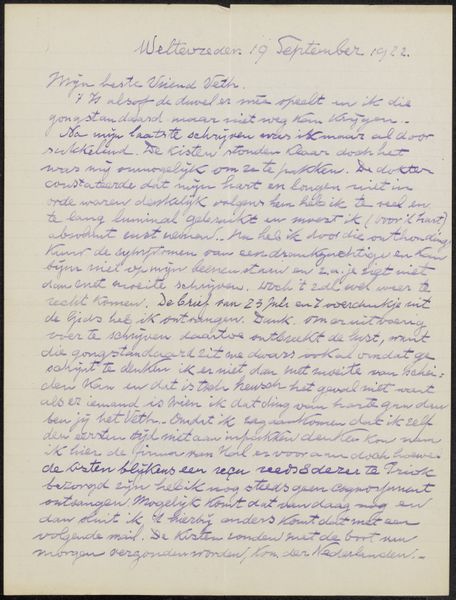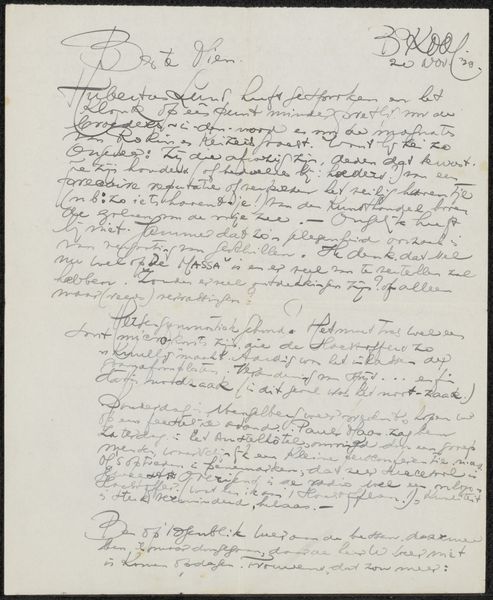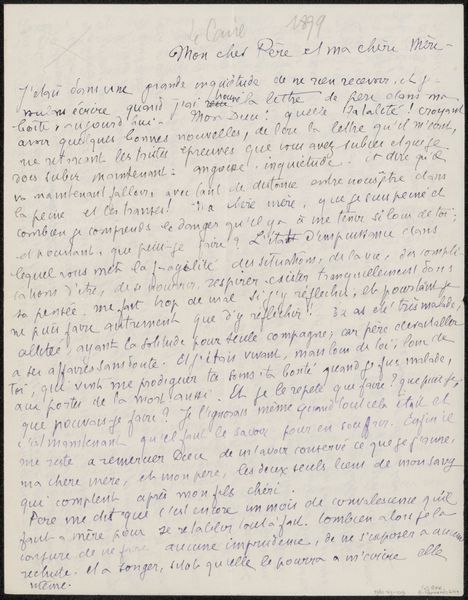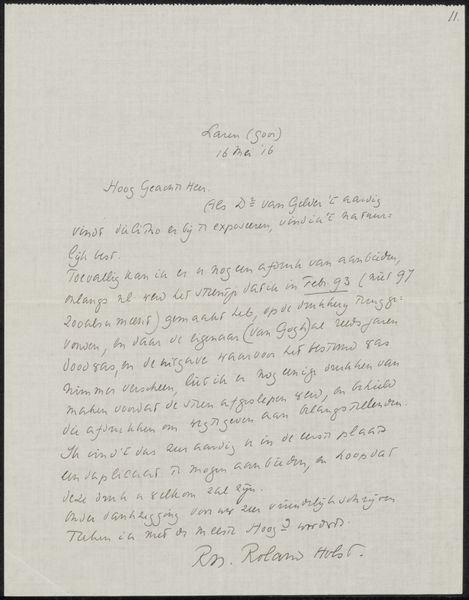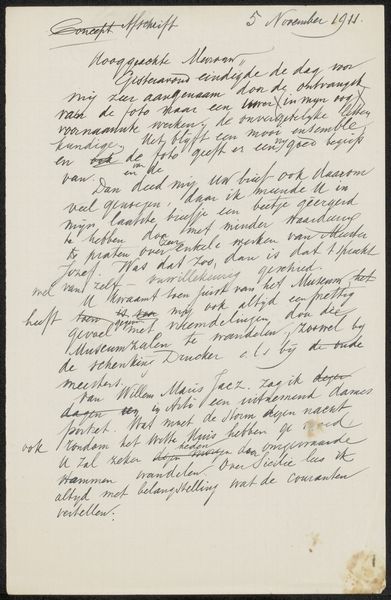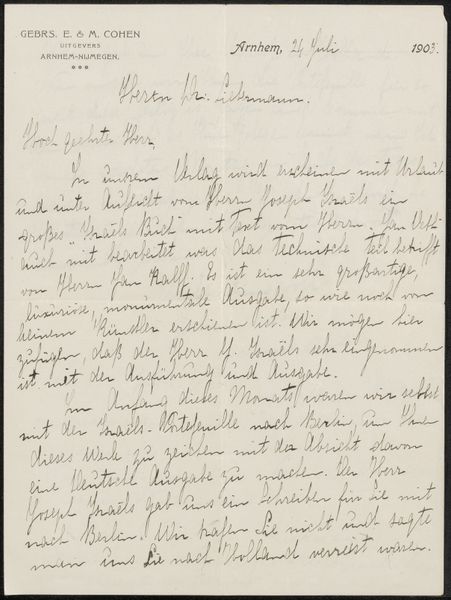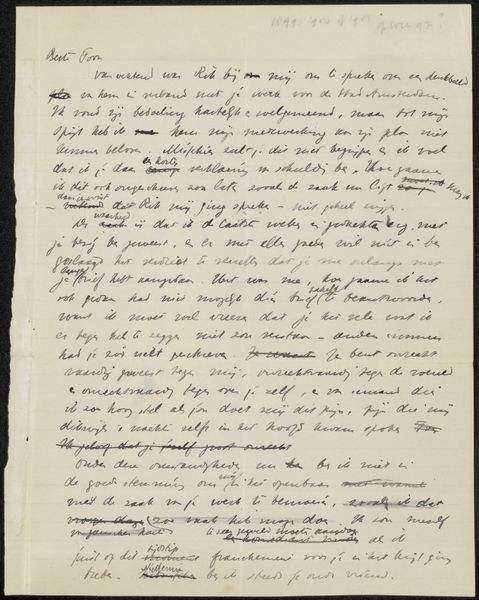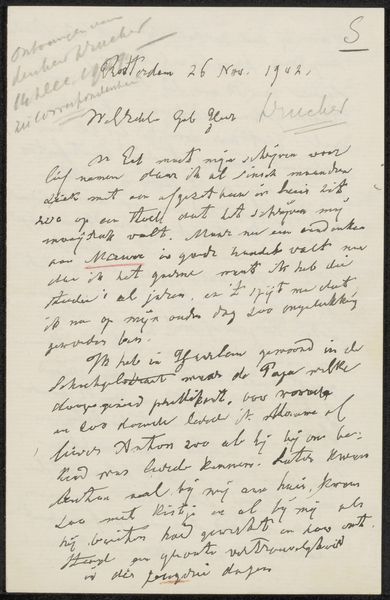
Copyright: Rijks Museum: Open Domain
Editor: We're looking at "Brief aan Richard Roland Holst," possibly from 1953 by A. van der Boom. It’s a drawing using pen and ink on paper, and the style feels contemporary even now. It appears to be handwritten and sent as a letter. I find it to be quite an intriguing intimate, if somewhat illegible, correspondence. What’s your take on this work? Curator: This piece offers a glimpse into the artistic networks of the mid-20th century. Van der Boom clearly valued Roland Holst's opinion, seeking his advice and evidently sending him a gift. It makes you wonder: how did artists support each other? How did they navigate the art world outside institutional spaces? Editor: That’s interesting! The text hints at artistic collaboration, but what can you tell me about the visual choices made in composing a letter, versus an artwork meant for a public audience? Curator: The visual presentation, the quality of the paper, the particular ink – all communicate intent. Is this a casual note, or something more carefully considered? How does the act of writing itself become a performance, an artwork even, when addressed to someone like Roland Holst? I'm interested in the letter's purpose: Did van der Boom see their correspondence with another artist, as a means to garner influence or support within the art establishment? Editor: It’s like a public and private piece all in one! It sounds like art history helps connect all those complex relationships that shaped art itself! Curator: Precisely. Understanding these relationships is key to understanding how art gains value and meaning within a specific context. I think seeing this everyday exchange as potentially holding significant purpose provides greater awareness of socio-political impact upon art and artists alike.
Comments
No comments
Be the first to comment and join the conversation on the ultimate creative platform.
